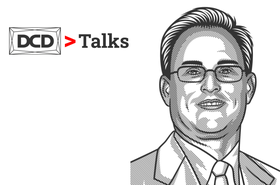On 31 December 2019, our planet was turned metaphorically upside-down. If you were at all like me, you chose to ignore the news warnings of the impending pandemic as little more than the yearly panic we would see over reports that Ebola had made its way to the UK.
Pandemics didn’t happen anymore. I remember learning about the black death at school, and feeling as if it was no more likely to happen again than the Harry Potter books turn out to be historical doctrine.
Alas, here we are, two and a half years later and I have never been proven more wrong. We were no more equipped to prevent the spread of disease, despite the fact that we knew so much more about it. Lockdown regulations did not stop the 6.3 million worldwide Covid deaths, but they did fundamentally alter the way many social institutions function, perhaps most noticeably healthcare.
The healthcare industry found itself having to ‘prioritize’ who it treated. Did treatment out-weigh the risk of infection to the patient and to others? How immediately did treatment really need to occur? And perhaps the most cataclysmic question – do we really need to see the patient in person for treatment?
The pandemic had a huge accelerating impact on the need for the healthcare industry to digitize, but it was not the only motivating factor: high expectations for care, an increasingly elderly population and chronic under-staffing also have an important role to play, and it is this that Schneider Electric employees David Evans and Samir El Hassanin discussed during DCD’s Inside Healthcare series.
David Evans, global segment leader of Healthcare for Schneider Electric, explained the complexity behind the issue.
“We are globally seeing a surge in an ageing population, and the implications for this in healthcare are quite significant. Not only in the provision of primary health through to general hospitals, but in terms of care in the community, residential care, and so on.
“At the same time, we're seeing a huge shortage of healthcare workers – nearly a 30 million shortage by 2030, and that is replicated not just in healthcare primary providers, we're talking about a state's workers and IT staff. Quite simply, the healthcare industry across the globe, at the heart of this explosion, is failing to recruit and retain quality staff, and so we need to look at how technology can support and address that.”
The way this is being addressed, according to Evans, is an electrification and digitization of the industry.
“Electrification is required simply because electricity is the only energy source that can be sustainably generated, and it can be the only energy that will solve our climate crisis across public estates.
“Digitization; there are a number of connected themes here. If we fully electrify our hospital estate, and that is the way we're going to move, then we have to control the electrical estate in a much more intelligent way.
“The assets have to be digitized in order to first give us the information to execute decisions. To enable a smart distribution of energy, we also have to monitor energy consumption so that we can optimize across the estate whether it's in an individual room or across the campus.”
Of course, with the increased digitization, there is an increased cyber risk. According to Evans, 75 percent of Schneider Electric’s customers in this sector are seeing attempts at cyber breaches on their IT estates.
While this is a concern, the ultimate benefits of digitization, notably those connected to net-zero ambitions, makes it an easy win.
“We have the net-zero ambitions of healthcare providers. In some cases, this is because their customers in the private sector are attracted to low carbon providers. But across the globe, where healthcare is publicly funded, where the government is providing that funding, the health estate – like education and others – are looking for a way of driving down emissions.
“The vast majority of carbon emissions from the healthcare estate don't come from the estate itself. They actually come from people doing things like traveling to and from the hospital. There is a statistic that says one in 12 journeys in London are related to health care, whether that's patient movement, or supply chain stuff. If we can really rethink space, and rethink telemedicine, then we can reduce our scope three emissions.”
Returning to the issue of the pandemic, there is an increased reluctance from people, both staff and patients, to come on-site. In part due to health and safety concerns, but also because remote work, appointments and so on have become the norm and are more convenient.
“Outpatient facilities that were in planning and being built, are now being delayed and just refilled because we are seeing this explosion of planning medicine with a reluctance from people to come on-site. We have doctors and clinicians that are asking, do we need as many consultant rooms? Do we need a new build, or do we need to totally repurpose what we've already got?
“We're seeing this in acute general hospitals and in university hospitals, in particular, where vast acres of space is used for back-office functions like server rooms. If we could liberate those spaces, do we really need to build a general hospital with the associated costs, embedded carbon disruption, and so on?”
The digitization is not limited to the above. Samir El Hassanin, director of Business Development, Global Secure Power, Healthcare, at Schneider Electric considered the other ways digitization can impact the healthcare industry, with a particular focus on IoT.
“Combining hardware and software has become a crucial tool for personalizing patient therapy, with medical equipment providers playing a major role in driving value-based health care, helping reduce medical costs, optimizing surgical performance, and improving patient outcomes,” said Hassanin.
“Connected medical devices at the Edge will also help close the loop between the patient and the healthcare professional. The IoT benefits go beyond return of investment, it is also aimed to reduce carbon footprint and create sustainability.
IoT in healthcare could be transformational. We could see ‘smart’ buildings, which can react to external signals such as the weather, time of day, and adjust heating, cooling, and lighting accordingly.
“Building management systems: energy management and smart lighting or HVAC systems can save hospitals and clinics around 20 percent of their energy cost annually. But new Edge computing and the IoT-based technology systems expand this benefit to the increasingly important operational plan for not only the majority of the hospital to be high production, but also to be resilient, sustainable, and deliver a high level of customer care not often seen before.”
In such a critical industry, it is fascinating to see how it adapts to continue meeting societies requirements. For a deeper look into the digitization of healthcare, watch the full episode here.
More from Schneider Electric
-

Sponsored The DCIM 3.0 trend explained in 500 words
Data center infrastructure management software was initially all about supporting PC servers. But DCIM 3.0 isn’t just about the data center, it’s about managing all connections between users and applications
-

DCD>Talks Sustainability through Software with Mark Hurley, Schneider Electric
Dive into sustainability through software with this DCD>Talk from our live DCD>Connect Silicon Valley event
-

Schneider Electric promises to reboot DCIM for the modern world
DCIM 3.0 will handle hybrid and Edge at the CIO level
